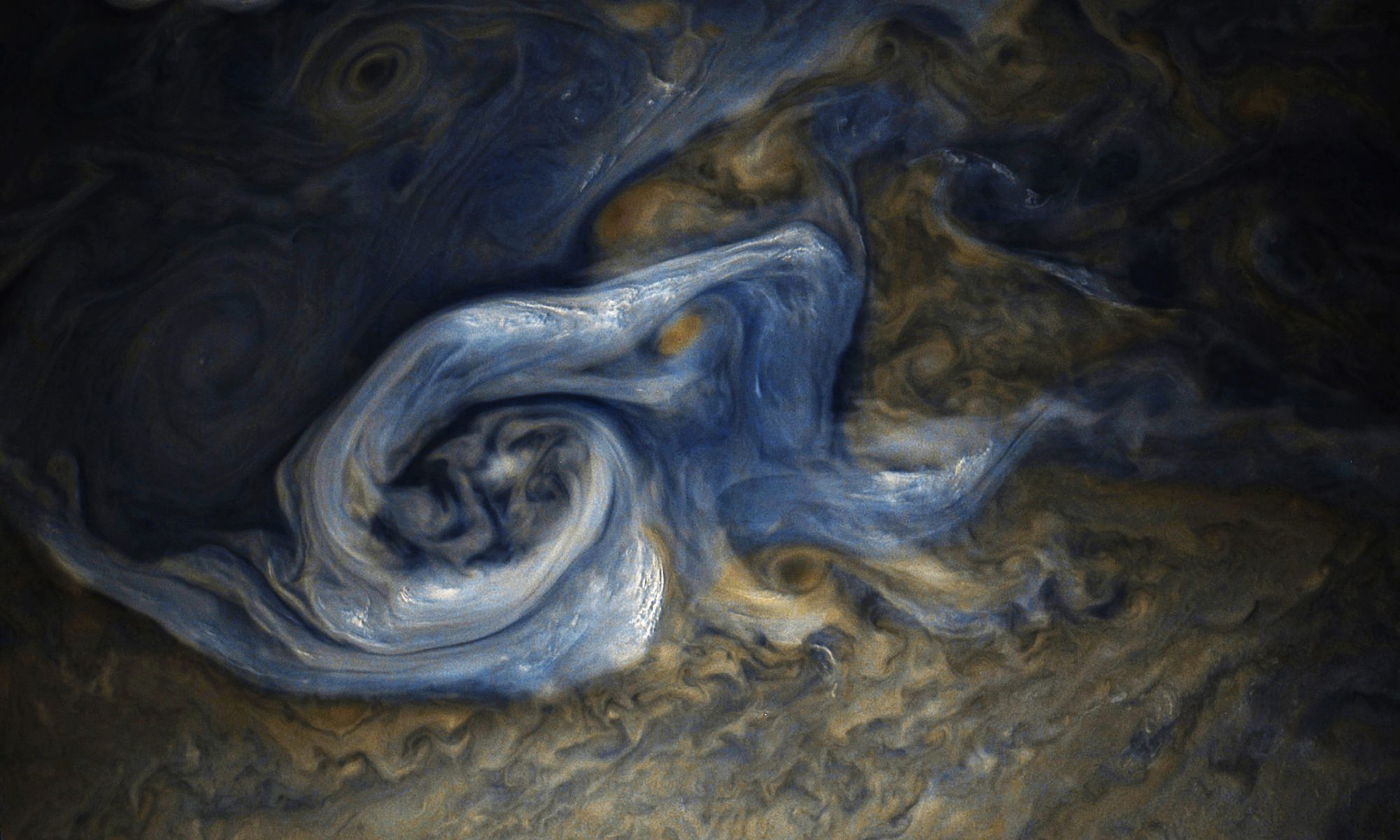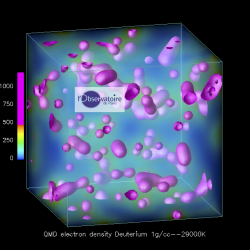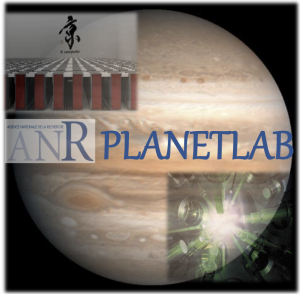Title: PLanetLab
Funding: ANR (French National Funding agency)
Duration: 2012-2016
Budget: 451083euros
Partners: LUTH (PI), CEA, IMPMC-UMPMC, LULI Ecole Poly.
The PLanetLab project assembles four teams in the area of matter under extreme conditions to study the properties of metallic alloys and complex silicates at conditions encountered in Earth-like planets as well as in the core of giant planets and exoplanets. More than 2000 exoplanets have been discovered as of today and the detection of Earth like exoplanets has just been announced. While the number of exoplanets detected is growing at an incredible pace so as to make them a new class of astrophysical objects, the physical properties required for modeling their interiors are currently lacking.
The main goal of the proposal is to establish benchmarking values for the equations of states, melting curves and the transport properties in the Fe-Si-Mg-O-S complex anticipated in these earth like exoplanets. As these objects are significantly larger than the ones found in the solar system, this requires to expand our knowledge of the phase diagram of these element by an order of magnitude in pressure. This works also greatly impact the modeling of giant planet and exoplanet inner cores that are currently based on ill-defined silicates equation of states and high pressure melting curves.
To reach this goal, the team applies first principle simulations based on density functional theory to calculate the phase diagrams and associated physical properties for simple silicates and oxides (SiO2, MgSiO3, MgO) and iron alloys (Fe-S, Fe-Si, Fe-O). The strength of the current proposal is to extend the ab initio simulations in the regime relevant to exoplanet modeling after a careful validation against both static and dynamical experiments that can be performed in a limited region of the phase diagram. Ab initio simulations and the associated approximations are designed to calculate properties of semi-conductors, metals, or nanosystems at normal density and pressure conditions. A careful validation of the results obtained for these complex materials at the extreme densities and temperatures relevant to planetary modeling is thus required.


